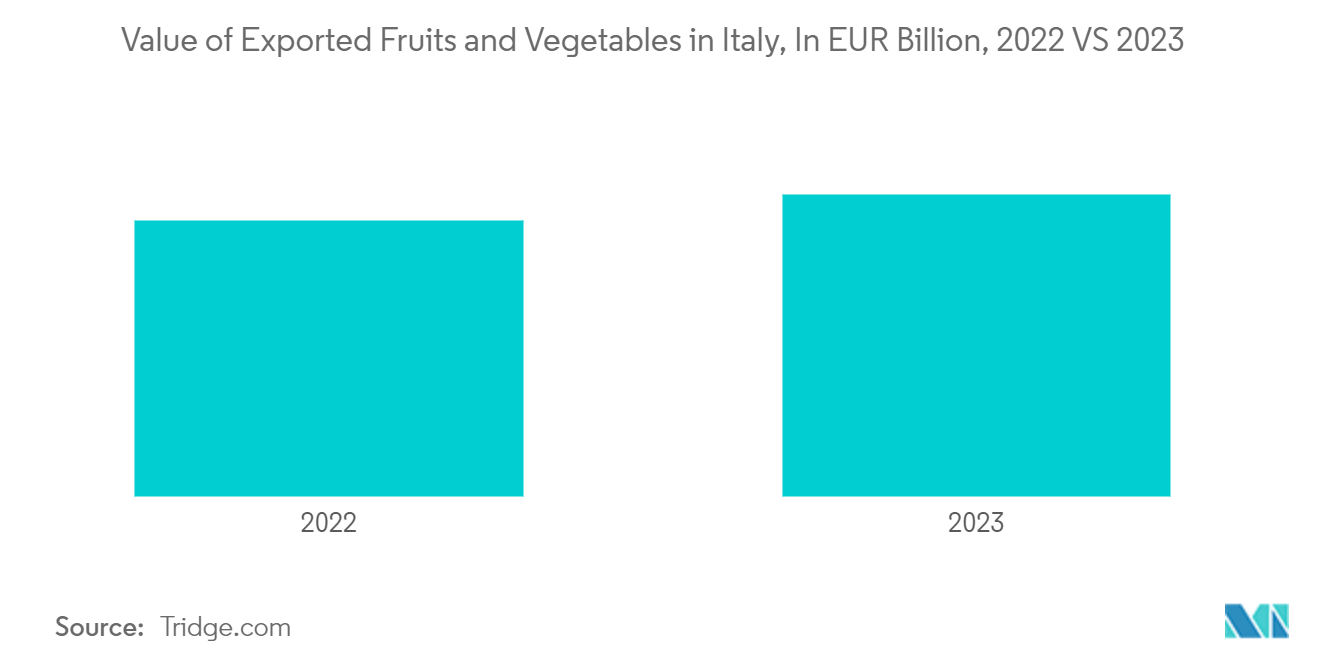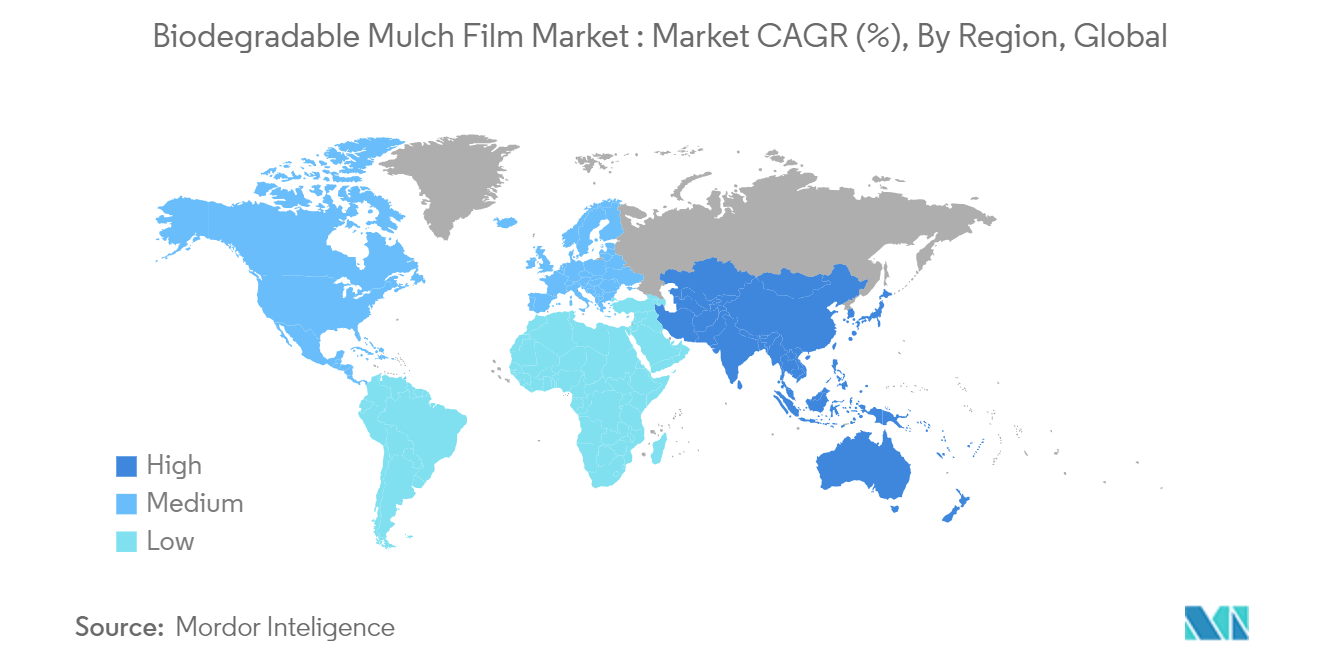Market Trends of Biodegradable Mulch Film Industry
Fruits and Vegetables to Account for a Significant Share
- Mulch films, whether black or transparent, play a crucial role in modern agriculture. They facilitate the planting or direct sowing of crops through punched holes, enhancing several factors pivotal for crop growth. This method not only boosts the effectiveness of growing various vegetables but also leads to earlier harvests, increased yields, and improved produce quality.
- Moreover, these films significantly reduce moisture loss from the soil, keeping the ground moist and subsequently cutting down on the need for additional watering, thus reducing costs. Field trials have demonstrated that using agricultural films can nearly double vegetable harvests compared to traditional methods.
- Black and black/white mulch films serve a dual purpose. They not only prevent weed growth but also shield against accompanying flora. Additionally, these films act as a protective barrier against rain, safeguarding valuable agrochemicals and fertilizers from being washed away. By maintaining soil moisture, they also prevent soil compaction, ensuring it stays loose and conducive for plant growth.
- Due to the large proportion of mulch films used in fruits and vegetables and all the environmental problems related to their disposal, biodegradable mulch films seem to be the best solution for replacing conventional polyethylene mulches.
- Additionally, traditional mulch film waste causes an environmental problem because it is very contaminated with soil and vegetable residues, making the recycling process expensive, time-consuming, and an uneconomic activity. These biodegradable mulch films have the advantage of being disposed directly into the soil or into a composting system at the end of their lifetime and undergo biodegradation by soil microorganisms. This saves time and money.
- BASF offers the polymer Ecovio M, which is made up of polymer PLA (polylactic acid), which has biobased content and is completely biodegradable. Its advantage is that the farmer does not have to laboriously collect the mulch films after harvest but can plow them directly, which helps save time and money.
- Furthermore, Italy exports tons of fresh fruits and vegetables to other countries annually, and players such as Novamont offer Mater-Bi mulch film for processing vegetables. Italy is the main European producer of tomatoes. According to the Associazione Nazionale Industriali Conserve Alimentari Vegetali, the export value of tomato products in Italy rose by 25.2% in 2023 compared to the previous year.

Asia-Pacific to Witness Significant Market Growth
- Asia-Pacific is projected to register the highest rate in biodegradable mulch film, as the increasing population, especially in China and India, is increasing the demand for food, increasing the usage of biodegradable mulch films in crop production.
- The government is also taking necessary steps to improve the productivity of crops. In China, the government’s National Development and Reform Commission stated that China wants to promote non-plastic products, including biodegradable mulch film, in the agriculture sector.
- Additionally, in India, the government estimates an increase in pulse production for the coming years, which is expected to significantly raise the demand for biodegradable mulch films. According to PIB, 273.02 lakh tonnes of pulses were expected to be farmed during 2021-2022, with an increment of 275.04 lakh tonnes compared to 2022-2023.
- Furthermore, in May 2023, Singapore's RWDC Industries, a biotech start-up pioneering biopolymer solutions as alternatives to petroleum-based plastics, and Lummus Technology, a provider in process technology, inked a memorandum of understanding (MOU). This collaboration aims to spearhead worldwide initiatives for deploying PHA, a biodegradable polymer.


